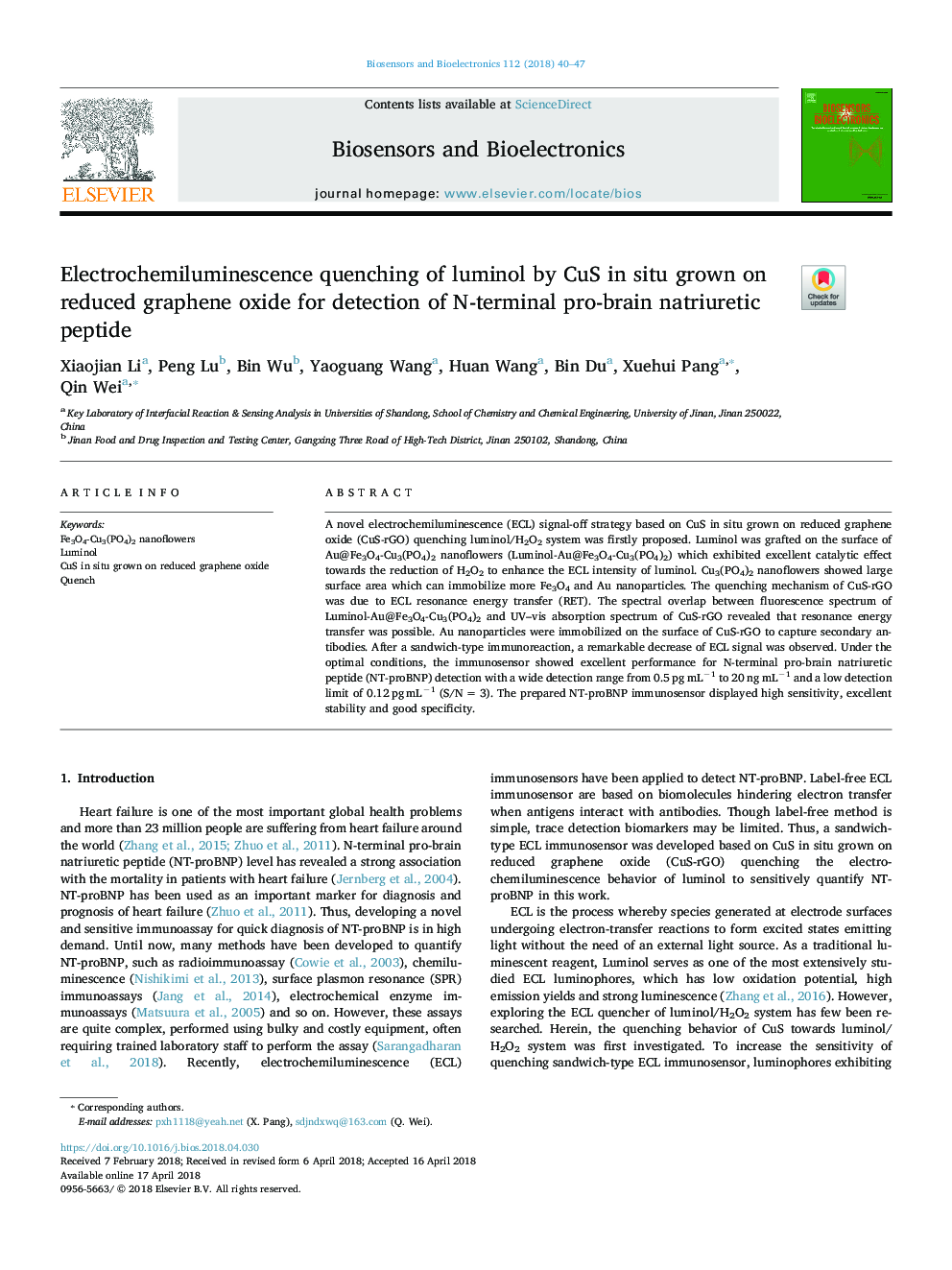| کد مقاله | کد نشریه | سال انتشار | مقاله انگلیسی | نسخه تمام متن |
|---|---|---|---|---|
| 7229250 | 1470920 | 2018 | 8 صفحه PDF | دانلود رایگان |
عنوان انگلیسی مقاله ISI
Electrochemiluminescence quenching of luminol by CuS in situ grown on reduced graphene oxide for detection of N-terminal pro-brain natriuretic peptide
دانلود مقاله + سفارش ترجمه
دانلود مقاله ISI انگلیسی
رایگان برای ایرانیان
کلمات کلیدی
موضوعات مرتبط
مهندسی و علوم پایه
شیمی
شیمی آنالیزی یا شیمی تجزیه
پیش نمایش صفحه اول مقاله

چکیده انگلیسی
A novel electrochemiluminescence (ECL) signal-off strategy based on CuS in situ grown on reduced graphene oxide (CuS-rGO) quenching luminol/H2O2 system was firstly proposed. Luminol was grafted on the surface of Au@Fe3O4-Cu3(PO4)2 nanoflowers (Luminol-Au@Fe3O4-Cu3(PO4)2) which exhibited excellent catalytic effect towards the reduction of H2O2 to enhance the ECL intensity of luminol. Cu3(PO4)2 nanoflowers showed large surface area which can immobilize more Fe3O4 and Au nanoparticles. The quenching mechanism of CuS-rGO was due to ECL resonance energy transfer (RET). The spectral overlap between fluorescence spectrum of Luminol-Au@Fe3O4-Cu3(PO4)2 and UV-vis absorption spectrum of CuS-rGO revealed that resonance energy transfer was possible. Au nanoparticles were immobilized on the surface of CuS-rGO to capture secondary antibodies. After a sandwich-type immunoreaction, a remarkable decrease of ECL signal was observed. Under the optimal conditions, the immunosensor showed excellent performance for N-terminal pro-brain natriuretic peptide (NT-proBNP) detection with a wide detection range from 0.5â¯pgâ¯mLâ1 to 20â¯ngâ¯mLâ1 and a low detection limit of 0.12â¯pgâ¯mLâ1 (S/Nâ¯=â¯3). The prepared NT-proBNP immunosensor displayed high sensitivity, excellent stability and good specificity.
ناشر
Database: Elsevier - ScienceDirect (ساینس دایرکت)
Journal: Biosensors and Bioelectronics - Volume 112, 30 July 2018, Pages 40-47
Journal: Biosensors and Bioelectronics - Volume 112, 30 July 2018, Pages 40-47
نویسندگان
Xiaojian Li, Peng Lu, Bin Wu, Yaoguang Wang, Huan Wang, Bin Du, Xuehui Pang, Qin Wei,